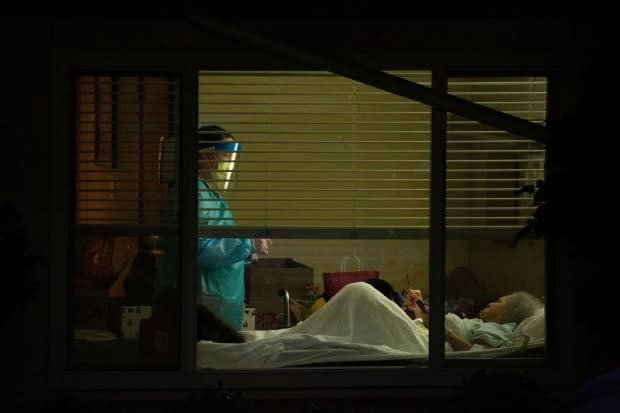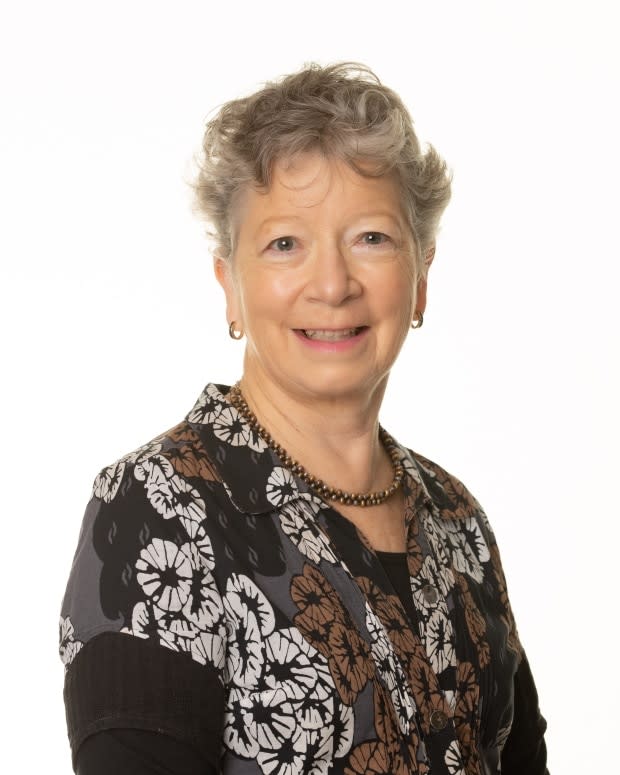'Your whole life is spent caring': Clinicians over 60 stay on the job during pandemic despite the greater risk

More than one-third of Canada's COVID-19 cases are people 60 and over. Many doctors and nurses are in that age group, which has experts considering about how best to protect them during the coronavirus outbreak, including the use of virtual care and other innovative tools.
In a commentary published last month in JAMA about older clinicians working during the pandemic, U.S. researchers suggested that hospitals and health departments "carefully consider how best to protect and preserve their workforce, with careful consideration involving older physicians and nurses."
Older nurses and physicians shouldn't necessarily be precluded from direct care of patients with COVID-19, the researchers say. They said it's worth considering that their direct duties be shifted to roles with less risk of exposure to the virus, such as consulting with younger staff, advising managers and speaking with families of patients and the public.
Dr. Fiona Smaill, 65, a professor of infectious diseases and microbiology at McMaster University in Hamilton, has treated patients with infections, including suspected COVID-19. Doctors and nurses have to assume everyone they're seeing could be infected and to wear personal protective equipment, such as surgical masks, gloves and gowns, she said.
"I think the most challenging [aspect] is dealing with the uncertainty," Smaill said. "You're worried. Dealing with that … in the setting of actually providing the best care that you can is a strain — both emotionally and physically."
Smaill said she feels well-supported by her employer. But she also sees how colleagues are struggling to respond to rapidly changing policies and procedures. And at the same time, they're concerned about their own health — including personal risk of infection — as well as the well-being of their families.
As for the journal commentary suggesting older clinicians step away from the front line, Smaill said she sees herself as fit and active.
"As a physician and a health-care worker, your whole life is spent caring," she said. "You've got this very deep, strong professional belief that really has impacted your whole life, so that doesn't just get turned off overnight."
WATCH | Doctor on 'desperation, sadness and hope' after putting patients on life support:
Health-care workers change duties
Smaill has been following many of her patients with HIV for up to 30 years. Now, she's making phone and video appointments to check how they're doing and to ensure their prescriptions are up to date.
Doctors may not normally give much thought to how disruptive it can be for patients to come to a clinic.
COVID-19 gives clinicians and patients alike an opportunity to think about the best way to serve patients' needs and wishes, Smaill said.
Douglas Staiger, the JAMA commentary's co-author and an economics professor at Dartmouth College in Hanover, N.H., said since the publication, he's received messages of thanks.
"When our article was published, some hospitals were already shifting older workers from jobs interacting with patients to more administrative and supervisor positions, but others were so overwhelmed and short-staffed that they had not yet had the bandwidth to plan for this issue systematically," Staiger said in an email.

The latest Canadian Institute for Health Information's 2018 reports on physicians and nurses suggest more than a quarter of doctors are aged 60 and older, as are more than one in 10 nurses.
Embracing technology
Dr. Louis Francescutti, 66, said the pandemic is a great time to look at how to embrace technology — from virtual care and smartphone ultrasound tools — to make the health-care system more sustainable.
He's a professor at the University of Alberta's School of Public Health and works in an emergency department in Edmonton. Francescutti recalled a recent example of a patient using a device to collaborate.
"I said, 'Oh, let me check your sugar [level],'" Francescutti said. "And she said, 'Oh, why bother? Here.' She pulled out her phone, and she's got a device on her that sends her the glucose reading."
Emphasize staying healthy, not treating illness
Not everyone at the ER needs to be seen face to face, Francescutti said.
"If you can figure out ways to keep people from becoming patients, then we're heading in the right direction," he said.
To get there will require a greater emphasis on prevention, he said.
"There is no such thing as a free lunch, and Canadians unfortunately think that our health system is free," Francescutti said. "It's very costly. Then it comes at the expense of building better parks, having better education, building better housing, building better transportation, cleaning up the environment. Those are the things that make you healthy."
To that end, health-care professionals in clinics, hospitals and long-term care are already innovating during the coronavirus crisis.
Prof. Ivy Bourgeault heads the Canadian Health Workforce Network, a group of researchers who guide governments about staffing in health care. She studies how doctors, nurses and other health-care workers, including personal support workers, can use their knowledge and skills fully and safely.
Personal support workers (also called continuing care assistants and health-care aides) feed, bathe and provide bedside care in long-term care facilities, hospitals and homes.
"The invisibility of that workforce and the invisibility of the people that they take care of — our older adults, our elders — has made them incredibly at risk," Bourgeault said.
Personal support workers also tend to be older women, Bourgeault said. But little is known about them since they aren't registered and tracked in most provinces.
Elder advocates have long called for access to benefits and sick leave for everyone employed in long-term care so workers aren't moving between multiple locations, potentially spreading infections.
Invaluable experience
Many dedicated clinicians over 60 are going to work during the pandemic, and their experience is invaluable, Bourgeault said.
"The physician who takes care of my mom in her long-term care centre is well into his 80s," Bourgeault said. That's where older doctors often shift to working as their careers wind down, she said.
Bourgeault pointed to solutions to the health-care service crunch during the pandemic, such as:
Equip retirees with new skills.
Tap into and reorient the skills of laid off dental nurses, as the United Kingdom is doing, to assist with anesthesia.
In Canada, health-care delivery is more compartmentalized, Francescutti said, which can be a barrier to the re-skilling of workers.
But if it was redesigned with the best interests of the patient instead of physicians first, then it could look and function differently than it does now, such as more professionals offering anesthesia.
Francescutti gave the example of waiting rooms in clinics that are designed so that the physician doesn't have to wait. But the priority could be flipped, he said, like at Apple's Genius Bar. Its customers don't need to wait long to consult a technology expert in stores.
'This is where we get innovative'
Dr. Sandy Buchman, president of the Canadian Medical Association, is 65. The palliative care physician in Toronto signed up to offer virtual care during the pandemic.
"This is where we get innovative," Buchman said. "Virtual care has taken off. We've crossed a threshold here, and we'll never go back." Doctors in every province and territory are now offering the service.
Buchman said age is just one factor in how severe an outcome someone could have with COVID-19. It's also important to consider older doctors and nurses who have other chronic illnesses, such as asthma, hypertension and asthma, he said, as well as how vulnerable others in their home are.
Staiger acknowledged people with underlining medical conditions are also at higher risk of death but said data were preliminary.


